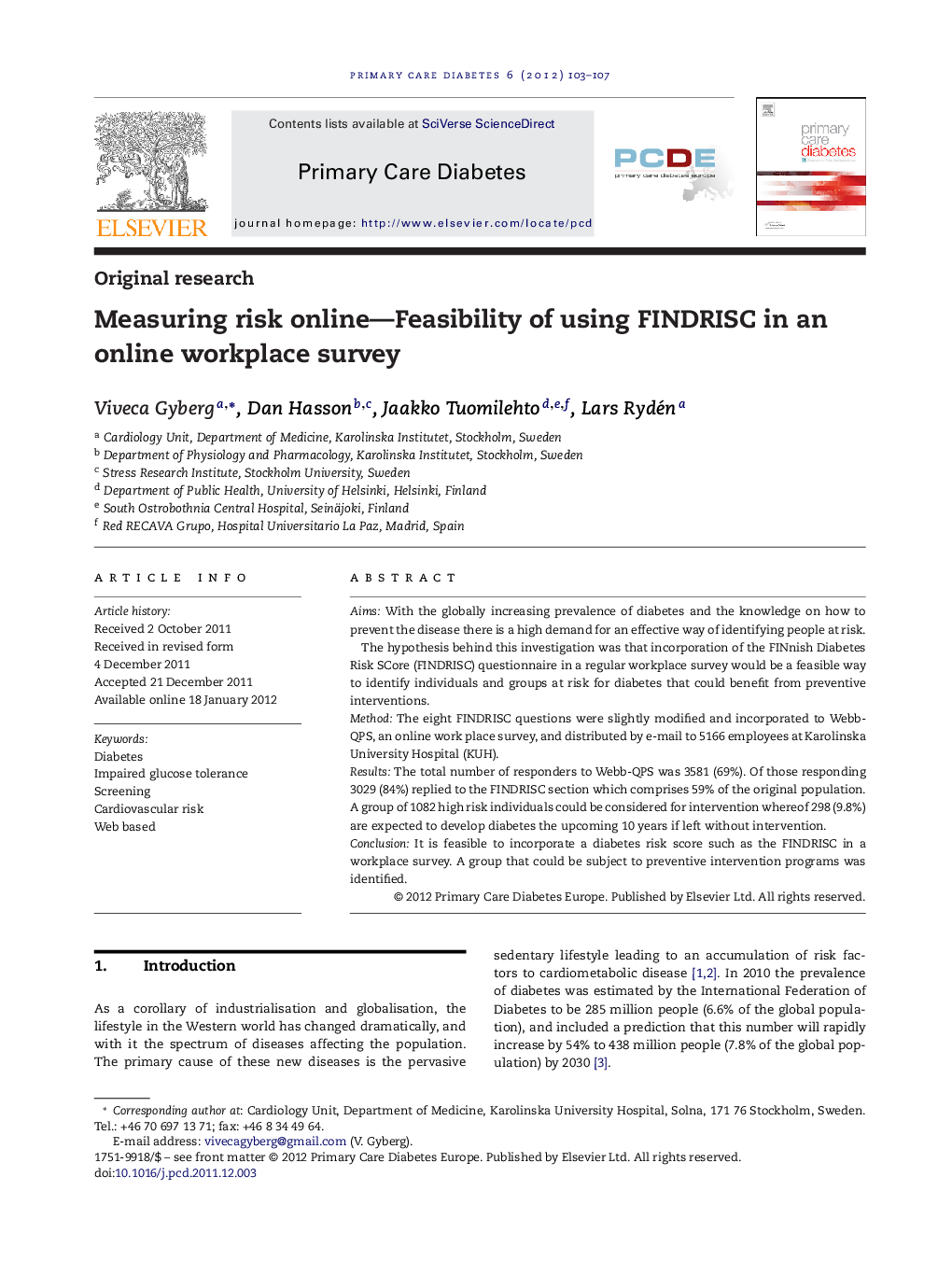| Article ID | Journal | Published Year | Pages | File Type |
|---|---|---|---|---|
| 2675718 | Primary Care Diabetes | 2012 | 5 Pages |
AimsWith the globally increasing prevalence of diabetes and the knowledge on how to prevent the disease there is a high demand for an effective way of identifying people at risk.The hypothesis behind this investigation was that incorporation of the FINnish Diabetes Risk SCore (FINDRISC) questionnaire in a regular workplace survey would be a feasible way to identify individuals and groups at risk for diabetes that could benefit from preventive interventions.MethodThe eight FINDRISC questions were slightly modified and incorporated to Webb-QPS, an online work place survey, and distributed by e-mail to 5166 employees at Karolinska University Hospital (KUH).ResultsThe total number of responders to Webb-QPS was 3581 (69%). Of those responding 3029 (84%) replied to the FINDRISC section which comprises 59% of the original population. A group of 1082 high risk individuals could be considered for intervention whereof 298 (9.8%) are expected to develop diabetes the upcoming 10 years if left without intervention.ConclusionIt is feasible to incorporate a diabetes risk score such as the FINDRISC in a workplace survey. A group that could be subject to preventive intervention programs was identified.
